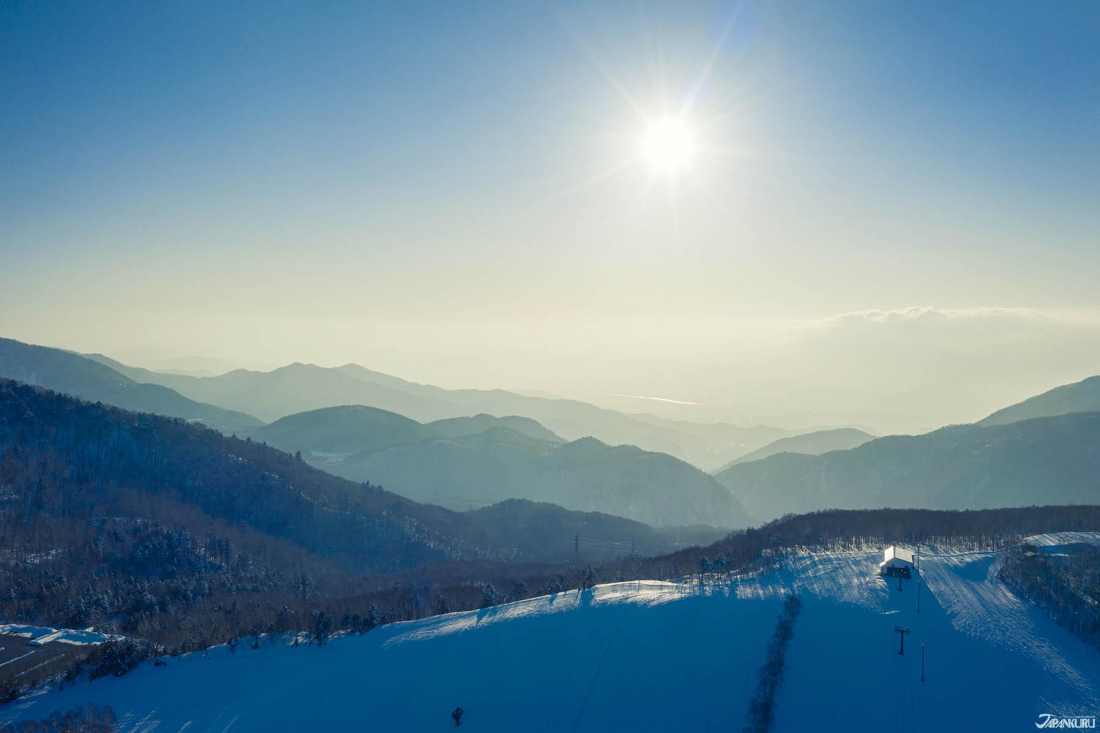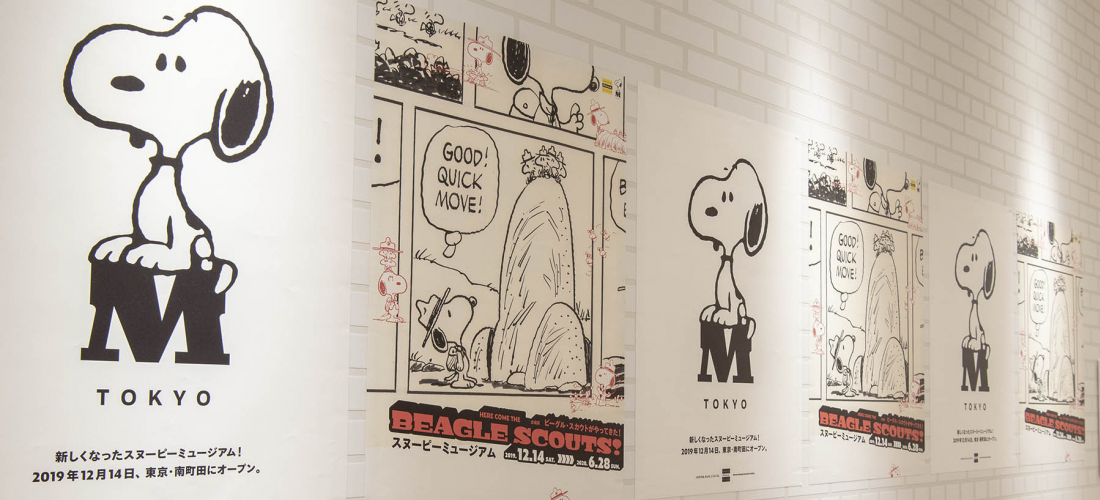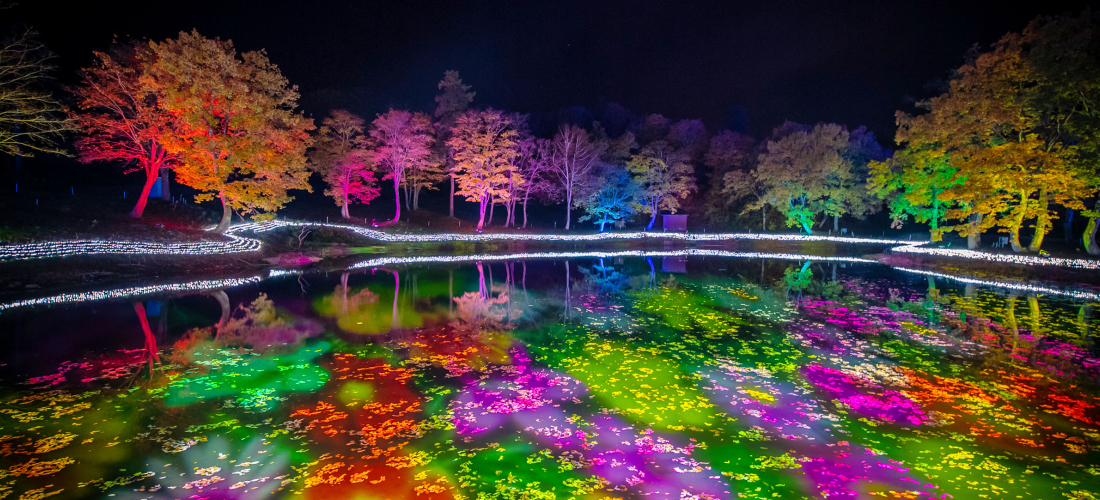
CONTENTS
La poudreuse japonaise et les plus hautes pistes de ski du Japon – les amateurs de ski se doivent de visiter la station de ski japonaise Shiga Kogen.
La station de ski de Shiga Kogen
Si vous aimez skier, vous connaissez probablement la poudreuse japonaise: certaines des neiges les plus légères et les plus sèches du marché et un plaisir de skier. Mais si vous envisagez de planifier votre prochain voyage de ski à Hokkaido ou Hakuba, vous passez à côté de ce que les habitants savent être la meilleure station de ski du Japon – Shiga Kogen, alias les Shiga Highlands. Les plus hautes pistes de ski du Japon et la meilleure qualité de neige du Japon, ainsi qu'un avant-goût de la culture japonaise des petites villes et un aperçu de l'histoire des Jeux olympiques de Nagano en 1998, Shiga Kogen est l'endroit où vous devriez skier cet hiver et le prochain.
7148 Hirao, Yamanochi, Shimotakai District, Nagano
Official Website (en)
Pourquoi Shiga Kogen?
Si vous êtes un vrai fan de ski, vous savez que toutes les pistes ne sont pas identiques. Jetez un coup d'œil à ce que Shiga Kogen a à offrir, vous verrez rapidement pourquoi les skieurs locaux vous diront que c'est un cran au-dessus des autres.
La principale raison pour laquelle les skieurs expérimentés affluent à Shiga Kogen est simple: la qualité de la neige. Le Japon est, en général, connu pour le ski de poudreuse, et la poudreuse japonaise est extrêmement sèche et légère. Alors que vous trouverez certainement de la neige artificielle autour de la région de Shiga Kogen, la neige fraîche tombe fréquemment, recouvrant les montagnes et donnant aux skieurs et aux snowboardeurs de nombreuses occasions de couper la poudreuse fraîche. Comme Shiga Kogen a tellement de pistes de ski différentes et que les amateurs de sports d'hiver japonais en général sont moins intéressés par le ski de poudreuse, dévalez les pistes tôt le matin à Shiga Kogen et vous êtes assuré de profiter un maximum des premières pistes!
Et bien que la plupart des stations de ski au Japon diffusent de la musique de fond le long des montagnes, à Shiga Kogen, vous n'avez pas à vous soucier de savoir si vous voulez écouter des tubes pop japonais toute la journée ou non. Les flancs de la montagne sont calmes, sans musique de fond, vous permettant de profiter des sons satisfaisants des skis sur la neige.
Pour toute cette neige fraîche et légère, nous pouvons remercier l'altitude! Bien qu'elles ne soient peut-être pas aussi hautes que le mont Fuji, les pistes de ski des Shiga Highlands sont parmi les plus hautes de toutes les stations de ski du Japon, ce qui signifie que Shiga Kogen a probablement la meilleure qualité de neige du Japon. Alors que d'autres destinations japonaises populaires comme Hokkaido ou Hakuba peuvent se retrouver avec de la neige assez humide, Shiga Kogen est suffisamment haute pour que la neige reste belle et sèche jusqu'à la prochaine chute de neige. Et Shiga Kogen fait en fait partie d'un parc national japonais, ce qui signifie que le paysage est spectaculairement préservé. Il n'y a pas de grande entreprise qui travaille dans les coulisses ici, juste des habitants qui aiment profiter du paysage naturel, dans l'espoir de partager la beauté de Shiga Kogen avec le monde!
De plus, comme nous l'avons évoqué précédemment, Shiga Kogen a beaucoup de pistes de ski! La station de ski est composée de 18 domaines différents. Ainsi, alors que Shiga Kogen est particulièrement apprécié des amateurs de ski passionnés, les novices et les vieux pros peuvent trouver des pistes adaptées à leurs préférences, en poudreuse ou damées. Cela inclut même les pistes de ski qui ont été utilisées pour les Jeux olympiques d'hiver de 1998 à Nagano! Shiga Kogen est le lieu des épreuves techniques olympiques de ski alpin de 1998. Mais si les cinq domaines skiables différents de la station semblent accablants, ne vous inquiétez pas – non seulement ils ont une navette gratuite pratique dans toute la région pour vous rendre à différentes pistes de ski, et des forfaits de remontées mécaniques universels pratiques, mais nous avons également quelques recommandations pour vous.
A voir & à skier absolument
Il n'y a pas de mauvaises options pour savoir où skier à Shiga Kogen, mais si vous ne savez pas par où commencer, vous pouvez aussi bien commencer par le haut! Littéralement – commencez votre journée au sommet de Yokoteyama (横 手 山), une montagne parfois appelée le mont Yokote. Le domaine skiable de Yokoteyama-Shibutoge culmine à 2307 mètres d'altitude, la plus haute piste de ski officielle du Japon, vous offrant une vue spectaculaire alors que vous glissez à travers les chutes de neige moelleuses.
Les skieurs moins ambitieux, ou ceux qui recherchent une façon légèrement différente de profiter de la vue, pourraient également être intéressés par le parcours de randonnée en raquettes à Yokoteyama.
La station de ski de Terakoya (寺 小屋) n'a peut-être pas tout à fait la hauteur de Yokoteyama, mais c'est un endroit où les skieurs olympiques ont dévalé les pentes en 1998! Et au pied du mont Terakoya se trouve l'une des rares zones pour enfants de la région, où les amateurs de plaisir de tous âges peuvent faire de la luge et commencer des batailles de boules de neige.
Et enfin, la station de ski de Yakebitaiyama (焼 額 山) dans la région d'Okushigakogen a non seulement accueilli des événements olympiques d'hiver de Nagano, mais elle propose désormais une grande variété de sentiers.
Les autres charmes de Shiga Kogen
Le ski de fond (ski hors-piste) à Shiga Kogen doit être fait grâce à des visites guidées pré-organisées, mais cela vaut la peine de faire une réservation. Bien que Shiga Kogen possède des sentiers de toutes sortes, la chance unique de faire du hors-piste et d'explorer le potentiel du ski de fond à l'intérieur du parc national de Joshin'etsukogen est un régal unique. Les flancs de montagnes vierges et intacts du Japon ne demandent qu'à être admirés.
Une fois que le soleil se couche, cela ne veut pas dire que ce soit la fin de la journée! Si vous êtes prêt à continuer, ou si vous aimez simplement le ski de nuit (ou du snowboard), c'est une façon amusante de terminer la soirée à Shiga Kogen.
(Et cela vous donne une chance d'apprécier le ciel nocturne rempli d'étoiles.)
Shiga Kogen est moins un lieu de fête et plus un lieu de rassemblement pour les amateurs de sports d'hiver, mais il y a encore des endroits pour prendre un bon verre et se détendre avec vos compagnons de voyage. Les amateurs de pub peuvent profiter d'une visite à Teppa Room, qui propose une variété de bières locales Shiga Kogen et des plats assez savoureux pour les accompagner.
Teppa Room
1163 Hirao, Yamanouchi-machi, Shimotakai-gun
Official Website (jp) / Official Facebook
Et last but not least, les onsen (温泉, sources chaudes) de la région sont populaires auprès des humains … et des singes! C'est vrai, bien que vous puissiez certainement profiter d'une heure de bain dans un bain local comme Kumanoyu Onsen, l'une des attractions touristiques les plus populaires de la région est en fait les singes des neiges aimant les onsen au parc des singes de Jigokudani, facilement accessible en bus depuis le ski. Regarder les petits macaques se détendre dans l'eau de source fumante et toiletter paresseusement leur fourrure pourrait être encore plus relaxant que de prendre un bain vous-même.
Kumanoyu Onsen (熊の湯温泉)
Kumanoyu Hotel, 7148 Hirao, Yamanochi, Shimotakai District, Nagano
Official Website (en)
Jigokudani Yaen-Koen Monkey Park (地獄谷野猿公苑)
6845 Yamanouchi-machi, Shimotakai-gun, Nagano
Official Website (en)
Préparer son voyage à Shiga Kogen
Accès
Alors, comment se rendre dans cette station de ski en montagne? Eh bien, grâce à un bus direct depuis la gare de Nagano, c'est assez facile!
⇩
⇒ Hokuriku Shinkansen (Train à grande vitesse) ⇒
⇩
Nagano Station
⇩
⇒ Bus Direct (West Exit Bus Stop #23) ⇒
⇩
Shiga Kogen Ski Resort!
Les voyageurs qui partent de Tokyo, Nagoya ou Kanazawa ont le plus de facilité à se rendre à Shiga Kogen. Un trajet en train à grande vitesse, un bus et vous y êtes! Les voyageurs venant d'endroits plus à l'ouest ne l'ont pas trop mal, cependant. Depuis les gares d'Osaka ou de Kyoto, il suffit d'un trajet supplémentaire sur le Tokaido Shinkansen, en partant de la gare de Nagoya ou de Tokyo.
Logements
Grâce à la taille et à l'étendue impressionnantes de la station de ski de Shiga Kogen, il existe de nombreux endroits où séjourner. L'hôtel que vous choisirez peut dépendre de plusieurs facteurs différents – mis à part la question évidente du prix, choisir un hôtel proche des pistes qui vous intéresse pour skier le premier jour (ou le plus souvent) peut être pratique. Pour ceux qui aiment la vie nocturne, il vaut peut-être même la peine de choisir un hôtel près de Teppa Room ou un autre bar, afin de ne pas avoir à vous soucier du départ de la dernière navette gratuite.
Heureusement, un tout nouveau système qui permettra de réserver une chambre dans l'un des hôtels de Shiga Kogen est en cours d'élaboration, donc d'ici peu, il devrait être plus facile que jamais de trouver la chambre parfaite dans la station de ski!
L'hôtel Grand Phenix est un lieu de séjour populaire pour un certain nombre de raisons – non seulement il se trouve juste à côté d'un sentier, mais l'architecture frappante de style européen a été conçue par des designers européens et assemblée avec des matériaux expédiés du continent, et les restaurants haut de gamme à l'intérieur de l'hôtel attirent les gens séjournant partout dans la région.
Hotel Grand Phenix
Okushiga-Kogen, Yamanouchi-machi, Shimotakai, Nagano
Official Website (en)
L'hôtel Shiga Sunvalley se trouve non seulement juste en face d'une piste de ski qui propose des itinéraires plus faciles pour les skieurs débutants (et des itinéraires plus difficiles), mais offre également des chambres traditionnelles de style japonais et des repas japonais à plusieurs plats dans le restaurant.
Hotel Shiga Sunvalley
7148 Hirao, Yamanochi, Shimotakai District, Nagano
Official Website (jp)
A bientôt, Shiga Kogen
Prêt à glisser dans la poudreuse si légère et sèche que vous pouvez sauter dedans, vous secouer et repartir sans un flocon sur vos vêtements? Envie de goûter au ski de fond au milieu d'un magnifique parc national? Envie d'essayer les sports d'hiver après le coucher du soleil? Alors commencez à vous connecter avec Shiga Kogen sur leur page Facebook pour voir les dernières vidéos directement des pistes, et faites-nous savoir tous vos projets pour Shiga Kogen (ou vos expériences là-bas) sur le twitter, instagram, and facebook de Japankuru!
Details
NAME:Shiga Kogen Ski Resort (志賀高原スキー場)
MAP
ACCESS:De Nagano, prendre un bus express pour Shiga Kogen
COMMENT
FEATURED MEDIA
VIEW MORE 
A New Tokyo Animal Destination: Relax & Learn About the World’s Animals in Japan
#pr #japankuru #anitouch #anitouchtokyodome #capybara #capybaracafe #animalcafe #tokyotrip #japantrip #카피바라 #애니터치 #아이와가볼만한곳 #도쿄여행 #가족여행 #東京旅遊 #東京親子景點 #日本動物互動體驗 #水豚泡澡 #東京巨蛋城 #เที่ยวญี่ปุ่น2025 #ที่เที่ยวครอบครัว #สวนสัตว์ในร่ม #TokyoDomeCity #anitouchtokyodome

Shohei Ohtani Collab Developed Products & Other Japanese Drugstore Recommendations From Kowa
#pr #japankuru
#kowa #syncronkowa #japanshopping #preworkout #postworkout #tokyoshopping #japantrip #일본쇼핑 #일본이온음료 #오타니 #오타니쇼헤이 #코와 #興和 #日本必買 #日本旅遊 #運動補充能量 #運動飲品 #ช้อปปิ้งญี่ปุ่น #เครื่องดื่มออกกำลังกาย #นักกีฬา #ผลิตภัณฑ์ญี่ปุ่น #อาหารเสริมญี่ปุ่น

도쿄 근교 당일치기 여행 추천! 작은 에도라 불리는 ‘가와고에’
세이부 ‘가와고에 패스(디지털)’ 하나면 편리하게 이동 + 가성비까지 완벽하게! 필름카메라 감성 가득한 레트로 거리 길거리 먹방부터 귀여움 끝판왕 핫플&포토 스폿까지 총집합!
Looking for day trips from Tokyo? Try Kawagoe, AKA Little Edo!
Use the SEIBU KAWAGOE PASS (Digital) for easy, affordable transportation!
Check out the historic streets of Kawagoe for some great street food and plenty of picturesque retro photo ops.
#pr #japankuru #도쿄근교여행 #가와고에 #가와고에패스 #세이부패스 #기모노체험 #가와고에여행 #도쿄여행코스 #도쿄근교당일치기 #세이부가와고에패스
#tokyotrip #kawagoe #tokyodaytrip #seibukawagoepass #kimono #japantrip

Hirakata Park, Osaka: Enjoy the Classic Japanese Theme Park Experience!
#pr #japankuru #hirakatapark #amusementpark #japantrip #osakatrip #familytrip #rollercoaster #retrôvibes #枚方公園 #大阪旅遊 #關西私房景點 #日本親子旅行 #日本遊樂園 #木造雲霄飛車 #히라카타파크 #สวนสนุกฮิราคาตะพาร์ค

🍵Love Matcha? Upgrade Your Matcha Experience With Tsujiri!
・160년 전통 일본 말차 브랜드 츠지리에서 말차 덕후들이 픽한 인기템만 골라봤어요
・抹茶控的天堂!甜點、餅乾、飲品一次滿足,連伴手禮都幫你列好清單了
・ส่องมัทฉะสุดฮิต พร้อมพาเที่ยวร้านดังในอุจิ เกียวโต
#pr #japankuru #matcha #matchalover #uji #kyoto #japantrip #ujimatcha #matchalatte #matchasweets #tsujiri #말차 #말차덕후 #츠지리 #교토여행 #말차라떼 #辻利抹茶 #抹茶控 #日本抹茶 #宇治 #宇治抹茶 #日本伴手禮 #抹茶拿鐵 #抹茶甜點 #มัทฉะ #ของฝากญี่ปุ่น #ชาเขียวญี่ปุ่น #ซึจิริ #เกียวโต

・What Is Nenaito? And How Does This Sleep Care Supplement Work?
・你的睡眠保健品——認識「睡眠茶氨酸錠」
・수면 케어 서플리먼트 ‘네나이토’란?
・ผลิตภัณฑ์เสริมอาหารดูแลการนอน “Nenaito(ネナイト)” คืออะไร?
#pr #japankuru #sleepcare #japanshopping #nenaito #sleepsupplement #asahi #睡眠茶氨酸錠 #睡眠保健 #朝日 #l茶胺酸 #日本藥妝 #日本必買 #일본쇼핑 #수면 #건강하자 #네나이토 #일본영양제 #อาหารเสริมญี่ปุ่น #ช้อปปิ้งญี่ปุ่น #ร้านขายยาญี่ปุ่น #ดูแลตัวเองก่อนนอน #อาซาฮิ

Japanese Drugstore Must-Buys! Essential Items from Hisamitsu® Pharmaceutical
#PR #japankuru #hisamitsu #salonpas #feitas #hisamitsupharmaceutical #japanshopping #tokyoshopping #traveltips #japanhaul #japantrip #japantravel

Whether you grew up with Dragon Ball or you just fell in love with Dragon Ball DAIMA, you'll like the newest JINS collab. Shop this limited-edition Dragon Ball accessory collection to find some of the best Dragon Ball merchandise in Japan!
>> Find out more at Japankuru.com! (link in bio)
#japankuru #dragonball #dragonballdaima #animecollab #japanshopping #jins #japaneseglasses #japantravel #animemerch #pr

This month, Japankuru teamed up with @official_korekoko to invite three influencers (originally from Thailand, China, and Taiwan) on a trip to Yokohama. Check out the article (in Chinese) on Japankuru.com for all of their travel tips and photography hints - and look forward to more cool collaborations coming soon!
【橫濱夜散策 x 教你怎麼拍出網美照 📸✨】
每次來日本玩,是不是都會先找旅日網紅的推薦清單?
這次,我們邀請擁有日本豐富旅遊經驗的🇹🇭泰國、🇨🇳中國、🇹🇼台灣網紅,帶你走進夜晚的橫濱!從玩樂路線到拍照技巧,教你怎麼拍出最美的夜景照。那些熟悉的景點,換個視角說不定會有新發現~快跟他們一起出發吧!
#japankuru #橫濱紅磚倉庫 #汽車道 #中華街 #yokohama #japankuru #橫濱紅磚倉庫 #汽車道 #中華街 #yokohama #yokohamaredbrickwarehouse #yokohamachinatown

If you’re a fan of Vivienne Westwood's Japanese designs, and you’re looking forward to shopping in Harajuku this summer, we’ve got important news for you. Vivienne Westwood RED LABEL Laforet Harajuku is now closed for renovations - but the grand reopening is scheduled for July!
>> Find out more at Japankuru.com! (link in bio)
#japankuru #viviennewestwood #harajuku #omotesando #viviennewestwoodredlabel #viviennewestwoodjapan #비비안웨스트우드 #오모테산도 #하라주쿠 #日本購物 #薇薇安魏斯伍德 #日本時尚 #原宿 #表參道 #japantrip #japanshopping #pr

Ready to see TeamLab in Kyoto!? At TeamLab Biovortex Kyoto, the collective is taking their acclaimed immersive art and bringing it to Japan's ancient capital. We can't wait to see it for ourselves this autumn!
>> Find out more at Japankuru.com! (link in bio)
#japankuru #teamlab #teamlabbiovortex #kyoto #kyototrip #japantravel #artnews
Photos courtesy of teamLab, Exhibition view of teamLab Biovortex Kyoto, 2025, Kyoto ® teamLab, courtesy Pace Gallery

Japanese Makeup Shopping • A Trip to Kamakura & Enoshima With Canmake’s Cool-Toned Summer Makeup
#pr #canmake #enoshima #enoden #에노시마 #캔메이크 #japanesemakeup #japanesecosmetics

⚔️The Robot Restaurant is gone, but the Samurai Restaurant is here to take its place. Check it out, and don't forget your coupon!
🍣신주쿠의 명소 로봇 레스토랑이 사무라이 레스토랑으로 부활! 절찬 쿠폰 발급중
💃18歲以上才能入場的歌舞秀,和你想的不一樣!拿好優惠券去看看~
#tokyo #shinjuku #samurairestaurant #robotrestaurant #tokyotrip #도쿄여행 #신주쿠 #사무라이레스토랑 #이색체험 #할인이벤트 #歌舞伎町 #東京景點 #武士餐廳 #日本表演 #日本文化體驗 #japankuru #japantrip #japantravel #japanlovers #japan_of_insta

Japanese appliance & electronics shopping with our KOJIMA x BicCamera coupon!
用JAPANKURU的KOJIMA x BicCamera優惠券買這些正好❤️
코지마 x 빅 카메라 쿠폰으로 일본 가전 제품 쇼핑하기
#pr #japankuru #japanshopping #kojima #biccamera #japaneseskincare #yaman #dji #osmopocket3 #skincaredevice #日本購物 #美容儀 #相機 #雅萌 #日本家電 #일본여행 #면세 #여행꿀팁 #일본쇼핑리스트 #쿠폰 #일본쇼핑 #일본브랜드 #할인 #코지마 #빅카메라 #japankurucoupon



















































